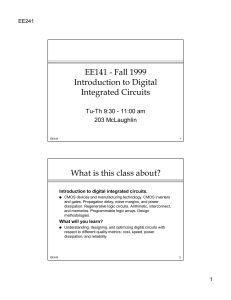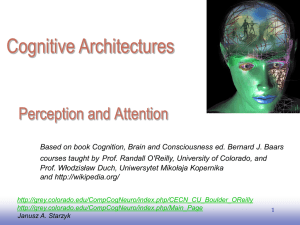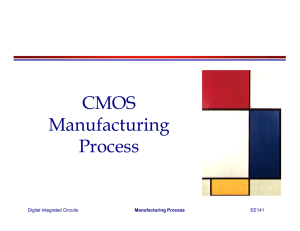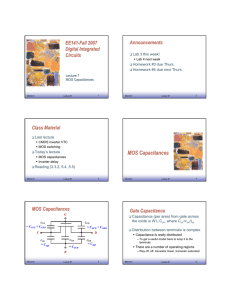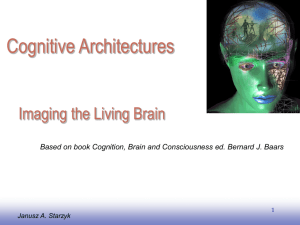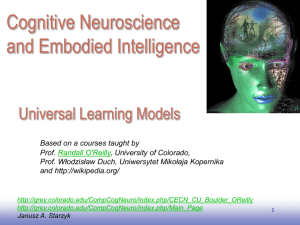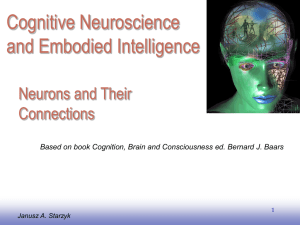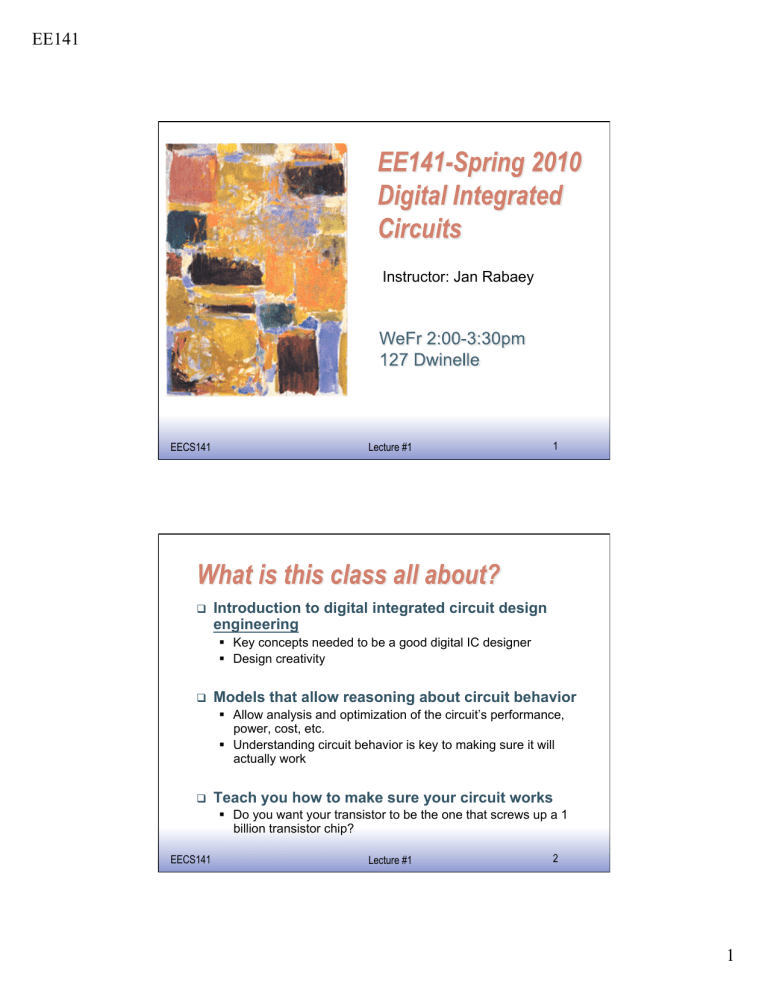
EE141 Instructor: Jan Rabaey EE141 EECS141 Lecture #1 1 Introduction to digital integrated circuit design engineering Key concepts needed to be a good digital IC designer Design creativity Models that allow reasoning about circuit behavior Allow analysis and optimization of the circuit’s performance, power, cost, etc. Understanding circuit behavior is key to making sure it will actually work Teach you how to make sure your circuit works Do you want your transistor to be the one that screws up a 1 billion transistor chip? EE141 EECS141 Lecture #1 2 1 EE141 Understanding, designing, and optimizing digital circuits for various quality metrics: Performance (speed) Power dissipation Cost Reliability EE141 EECS141 Lecture #1 3 CMOS devices and manufacturing technology CMOS gates Combinational and sequential circuits Arithmetic building blocks Interconnect Memories Propagation delay, noise margins, power Timing and clocking Design methodologies EE141 EECS141 Lecture #1 4 2 EE141 Instructor Prof. Jan Rabaey 563 Cory Hall, 643-3986, jan@eecs Office hours: We 4:00pm-5:30pm TAs: Stanley (Yuan-Shih) Chen, yschen@eecs (OH: Th. 12-1pm) Nam-Seog Kim, namseog@eecs (OH: Th. 5-6pm) Reader: TBD Web page: http://bwrc.eecs.berkeley.edu/Classes/IcDesign/ee141_s10/ EE141 EECS141 Lecture #1 5 Discussion sessions Th 11am-noon, Stanley (TBD) (proposed change) Th 4-5pm, Namseog (521 Cory) Same material in both sessions! Labs (353 Cory) Mo 1-4pm (Stanley) Tu 2-5pm (Namseog) We 11am-2pm (Stanley/Namseog) EE141 EECS141 Please choose one lab session and stick with it! Lecture #1 6 3 EE141 Assignment due EE141 EECS141 Lecture #1 7 9-10 assignments One design project (with multiple phases) Labs: 5 software 2 midterms, 1 final Midterm 1: Fr Febr 19 (TBD) Midterm 2: We April 7 (TBD) Final: Tu May 11, 11:39am-2:30pm (TBD) EE141 EECS141 Lecture #1 8 4 EE141 Please use the newsgroup for asking questions (news://news.csua.berkeley.edu/ucb.class.ee141) Can work together on homework But you must turn in your own solution Lab reports due 1 week after the lab session Project is done in pairs No late assignments Solutions available shortly after due date/time Don’t even think about cheating! EE141 EECS141 Homeworks: Lecture #1 9 10% Labs: 10% Projects: 20% Midterms: 30% Final: 30% EE141 EECS141 Lecture #1 10 5 EE141 Textbook: “Digital Integrated Circuits – A Design Perspective”, 2nd ed, by J. Rabaey, A. Chandrakasan, B. Nikolic Class notes: Web page Lab Reader: Web page Check web page for the availability of tools EE141 EECS141 Lecture #1 11 The sole source of information http://bwrc.eecs.berkeley.edu/icdesign/eecs141_s10 (Also via department web-site) Class and lecture notes Assignments and solutions Lab and project information Exams Many other goodies … Print only what you need: Save a tree! EE141 EECS141 Lecture #1 12 6 EE141 All lectures streamed life Also available in archive Check: http://webcast.berkeley.edu/courses.php However: Live experience has advantages EE141 EECS141 Lecture #1 13 Cadence Widely used in industry Online tutorials and documentation HSPICE EE141 EECS141 and Spectre for simulation Lecture #1 14 7 EE141 Assignment 1: Getting SPICE to work – see web-page Due next Friday, January 29, 5pm NO discussion sessions or labs this week. First discussion sessions in Week 2 First software lab in Week 3 EE141 EECS141 Lecture #1 15 Digital Integrated Circuit Design: The Past, The Present and The Future What made Digital IC design what it is today Why is designing digital ICs different today than it was before? Will it change in the future? EE141 EECS141 Lecture #1 16 8 EE141 The Babbage Difference Engine 25,000 parts cost: £17,470 EE141 EECS141 Lecture #1 17 EE141 EECS141 Lecture #1 18 9 EE141 First transistor Bell Labs, 1948 EE141 EECS141 19 Lecture #1 Bipolar logic 1960’s ECL 3-input Gate Motorola 1966 EE141 EECS141 Lecture #1 20 10 EE141 Intel, 1971. 2,300 transistors (12mm2) 740 KHz operation (10µm PMOS technology) EE141 EECS141 Lecture #1 21 Intel, 2005. 125,000,000 transistors (112mm2) 3.8 GHz operation (90nm CMOS technology) EE141 EECS141 Lecture #1 22 11 EE141 Dual Core Intel, 2006. 291,000,000 transistors (143mm2) 3 GHz operation (65nm CMOS technology) Cache Memory EE141 EECS141 Cache Lecture #1 23 Doubles every 2 years EE141 EECS141 Lecture #1 24 12 EE141 EE141 EECS141 Lecture #1 22 nm 364 Mbyte SRAM > 2.9 Billion Transistors 3rd genera=on high-­‐k + metal gate 25 In 1965, Gordon Moore noted that the number of transistors on a chip doubled every 18 to 24 months. He made a prediction that semiconductor technology will double its effectiveness every 18 months EE141 EECS141 Lecture #1 26 13 EE141 Electronics, April 19, 1965. EE141 EECS141 Lecture #1 27 EE141 EECS141 Lecture #1 28 14 EE141 Has been doubling every 2 years, but is now slowing down EE141 EECS141 29 Lecture #1 100000 18KW 5KW 1.5KW 500W Power (Watts) 10000 1000 100 Pentium® proc 286 486 8086 386 8085 8080 8008 1 4004 10 0.1 1971 1974 1978 1985 1992 2000 2004 2008 Year Did this really happen? Courtesy, Intel EE141 EECS141 Lecture #1 30 15 EE141 Has been > doubling every 2 years Has to stay ~constant EE141 EECS141 Lecture #1 31 Power Density (W/cm2) 10000 Sun’s Surface 1000 100 Rocket Nozzle Nuclear Reactor 8086 10 4004 Hot Plate P6 8008 8085 Pentium® proc 386 286 S. Borkar 486 8080 1 1970 1980 1990 2000 2010 Year Power density too high for cost-effective cooling EE141 EECS141 Lecture #1 32 16 EE141 *Pictures from http://www.tomshardware.com/2001/09/17/hot_spot/ EE141 EECS141 Lecture #1 33 Technology shrinks by 0.7/generation With every generation can integrate 2x more functions per chip; chip cost does not increase significantly Cost of a function decreases by 2x But … How to design chips with more and more functions? Design engineering population does not double every two years… Hence, a need for more efficient design methods Exploit different levels of abstraction EE141 EECS141 Lecture #1 34 17 EE141 Cell Phone Small Signal RF Digital Cellular Market (Phones Shipped) Power RF Power Management 1996 1997 1998 1999 2000 Units 48M 86M 162M 260M 435M Analog Baseband Digital Baseband (DSP + MCU) EE141 EECS141 35 Lecture #1 ∝ DSM ∝ 1/DSM “Macroscopic Issues” “Microscopic Problems” • Complexity • Time-to-Market • Millions of Gates • High-Level Abstractions • Reuse & IP: Portability • Predictability • etc. • Ultra-high speed design • Interconnect • Noise, Crosstalk • Reliability, Manufacturability • Power Dissipation • Clock distribution. Everything Looks a Little Different ? EE141 EECS141 Lecture #1 …and There’s a Lot of Them! 36 18 10,000 10,000,000 100,000 100,000,000 Logic Tr./Chip Tr./Staff Month. 1,000 1,000,000 10,000 10,000,000 100 100,000 Productivity (K) Trans./Staff - Mo. Complexity Logic Transistor per Chip (M) EE141 1,000 1,000,000 58%/Yr. compounded Complexity growth rate 10 10,000 100 100,000 1,0001 10 10,000 x 0.1 100 xx 0.01 10 xx x x 1 1,000 21%/Yr. compound Productivity growth rate x 0.1 100 0.01 10 2009 2007 2005 2003 2001 1999 1997 1995 1993 1991 1989 1987 1985 1983 1981 0.001 1 Source: Sematech Complexity outpaces design productivity Courtesy, ITRS Roadmap EE141 EECS141 Lecture #1 37 EE141 EECS141 Lecture #1 38 19 EE141 Introduce basic metrics for design of integrated circuits – how to measure cost, delay, power, etc. EE141 EECS141 Lecture #1 39 20
